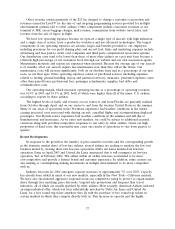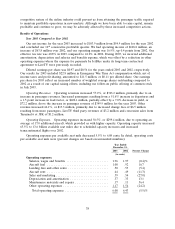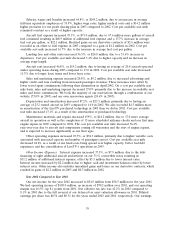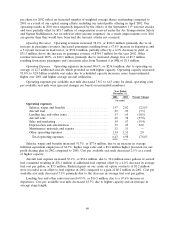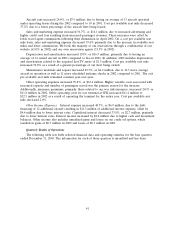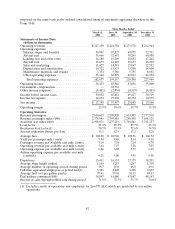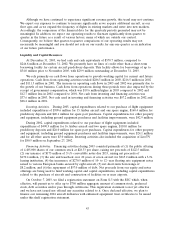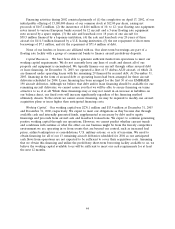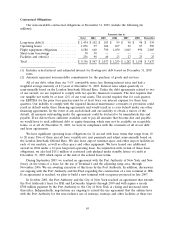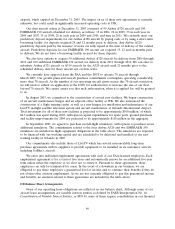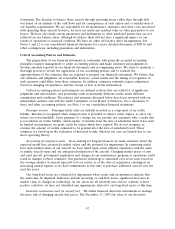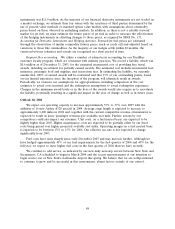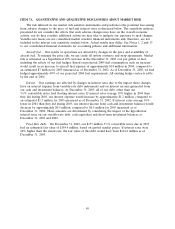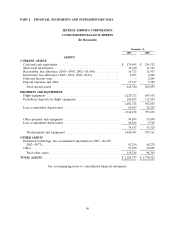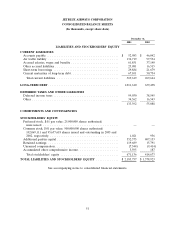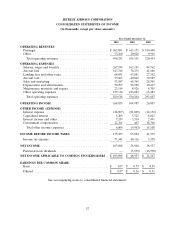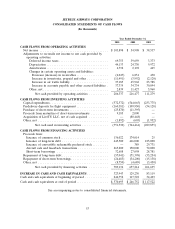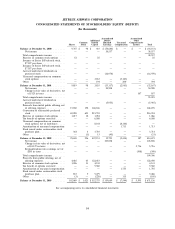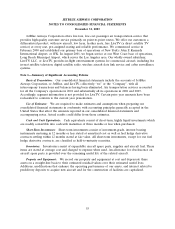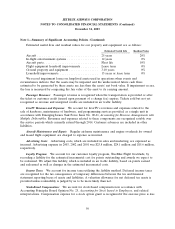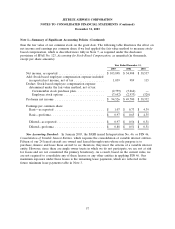JetBlue Airlines 2003 Annual Report Download - page 50
Download and view the complete annual report
Please find page 50 of the 2003 JetBlue Airlines annual report below. You can navigate through the pages in the report by either clicking on the pages listed below, or by using the keyword search tool below to find specific information within the annual report.statements. The decision to finance these aircraft through operating leases rather than through debt
was based on an analysis of the cash flows and tax consequences of each option and a consideration of
our liquidity requirements. We are responsible for all maintenance, insurance and other costs associated
with operating these aircraft; however, we have not made any residual value or other guarantees to our
lessors. We have also made certain guarantees and indemnities to other unrelated parties that are not
reflected on our balance sheet, although we believe these will not have a significant impact on our
results of operations or financial condition. We have no other off-balance sheet arrangements. See
Notes 1 and 12 to our consolidated financial statements for a more detailed discussion of FIN 46 and
other contingencies, including guarantees and indemnities.
Critical Accounting Policies and Estimates
The preparation of our financial statements in conformity with generally accepted accounting
principles requires management to adopt accounting policies and make estimates and judgments to
develop amounts reported in our financial statements and accompanying notes. We strive to maintain a
thorough process to review the application of our accounting policies and to evaluate the
appropriateness of the estimates that are required to prepare our financials statements. We believe that
our estimates and judgments are reasonable; however, actual results and the timing of recognition of
such amounts could differ from those estimates. In addition, estimates routinely require adjustment
based on changing circumstances and the receipt of new or better information.
Critical accounting policies and estimates are defined as those that are reflective of significant
judgments and uncertainties, and potentially result in materially different results under different
assumptions and conditions. The policies and estimates discussed below have been reviewed with our
independent auditors and with the Audit Committee of our Board of Directors. For a discussion of
these and other accounting policies, see Note 1 to our consolidated financial statements.
Passenger revenue. Passenger ticket sales are initially recorded as a component of air traffic
liability. Revenue is recognized when transportation is provided or when a ticket expires, as all of our
tickets are non-refundable. Upon payment of a change fee, we provide our customers with a credit that
is recorded in air traffic liability, which expires 12 months from the date of scheduled travel if not used.
In limited circumstances, we grant credit for tickets which have expired. We do not recognize as
revenue the amount of credits estimated to be granted after the date of scheduled travel. These
estimates are based upon the evaluation of historical trends, which in our case are limited due to our
short operating history.
Accounting for long-lived assets. In accounting for long-lived assets, we make estimates about the
expected useful lives, projected residual values and the potential for impairment. In estimating useful
lives and residual values of our aircraft, we have relied upon actual industry experience with the same
or similar aircraft types and our anticipated utilization of the aircraft. Changing market prices of new
and used aircraft, government regulations and changes in our maintenance program or operations could
result in changes to these estimates. Our purchased technology is amortized over seven years based on
the average number of aircraft expected to be in service as of the date of acquisition, resulting in an
increasing annual expense as we had commitments at that time to purchase additional aircraft over the
next five years.
Our long-lived assets are evaluated for impairment when events and circumstances indicate that
the assets may be impaired. Indicators include operating or cash flow losses, significant decreases in
market value or changes in technology. As our assets are all relatively new and we continue to have
positive cash flow, we have not identified any impairments related to our long-lived assets at this time.
Derivative instruments used for aircraft fuel. We utilize financial derivative instruments to manage
the price risk of changing aircraft fuel prices. The December 31, 2003 fair value of our derivative
47


